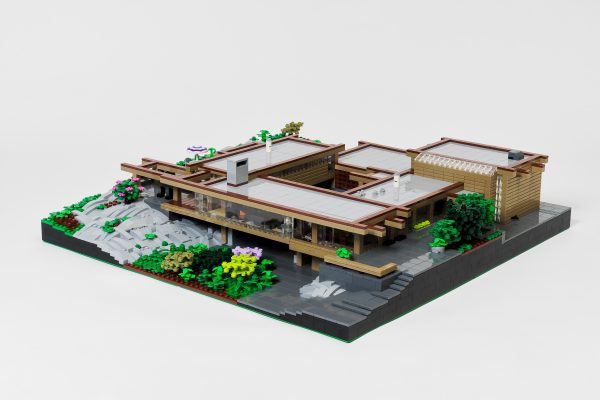
For artist and master LEGO builder Paul Hetherington, his love for architecture began with a train set.
It was his first opportunity as a child to observe buildings, and LEGO was a way for the three-year-old Paul to nurture his curiosity into a lifelong passion for architecture.
30 years later, Paul is an AFOL (Adult Fan of LEGO) and has expanded his portfolio to include trains, pop culture creations, as well as a large number of local buildings. During the pandemic, Paul hunkered down and dedicated some of the downtimes he had building new models. That’s when he started creating models of West Coast Modern style residences, those legendary homes that he grew up in proximity to in West Vancouver.
For those unfamiliar, the West Coast Modern style of architecture was developed as a way to integrate suburban living into a rainforest climate. Homes embodying this style first cropped up in the 1930s in cities such as Vancouver, Seattle, and Portland. In particular, many examples of the distinct architectural style were seen throughout West Vancouver.
The Genesis of the Project
Arthur Erickson’s Eppich 2, a glass-filled, curved steel structure, was the first model Paul built – and it set the standard for all the other LEGO homes. “The doors ended up being three bricks high and it’s a scale that I tried to stick with for all the other homes I built,” he said.
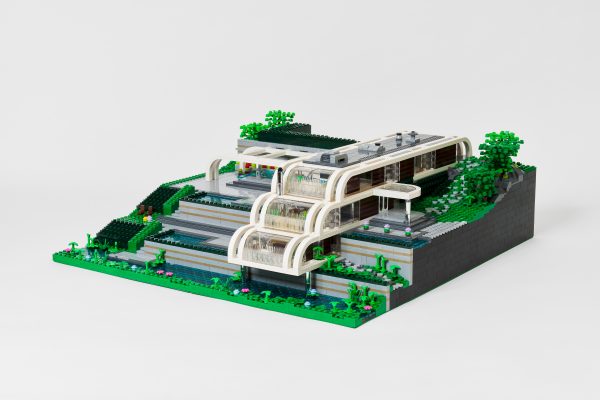
After he built Eppich 2, Paul was invited to meet the owner of Eppich 1 and tour the residence as well. “When you walk in there, it’s such a stunning home and the indoors blend so seamlessly with the outdoors – it has all the trademarks of West Coast Modern,” he said.
Being able to tour the homes wasn’t just an added perk. It also helped Paul gather the information he needed to create almost exact replicas of the homes in LEGO. Being able to view the homes helped him craft not just the exteriors, but the interiors as well. In fact, Paul would even include intricate details such as furniture and artwork in his projects.
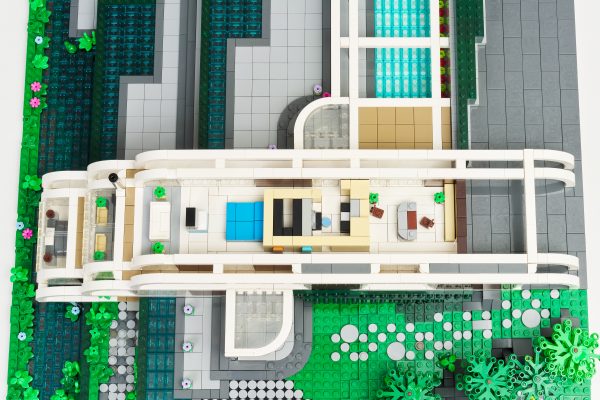
The genesis of the project, though, was when Paul showed the models to his friend Douglas Coupland who saw the possibility of a meaningful showcase. He then introduced Paul to Hilary Letwin, the curator at West Vancouver Art Museum, and show planning was in the works.
With Hilary’s guidance, Paul finished a total of eight West Coast Modern home models – all but one are of the original residences in West Vancouver.
Last But Not Least, the Merrick House
After wrapping up the seventh model, Paul was still holding out for one more. The Merrick House had been on his radar for quite some time, but he wasn’t feeling confident due to the complexity of the project. After all, the Merrick House is a 17-level home nestled into the forested hillside.
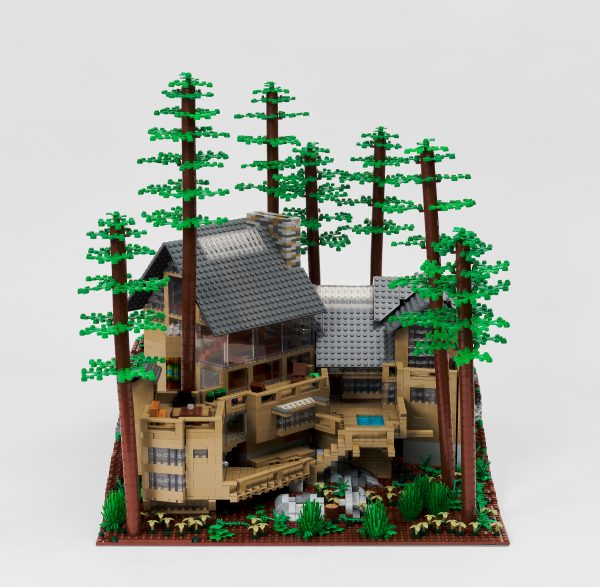
Luckily, Hilary was able to introduce Paul to the homeowners of the Merrick House, and after touring the iconic home, he began working on perhaps the most ambitious model of the project so far.
“For my brain to comprehend it, I had to start from the outside and work on it piece by piece. [The Merrick House] is also famous for having only one right angle in the house, and LEGO is a grid-based system, so I had to change most of the angles, but I found a way to make it work,” he said. “That was one of the most challenging, but it was one of the most fun to create.”
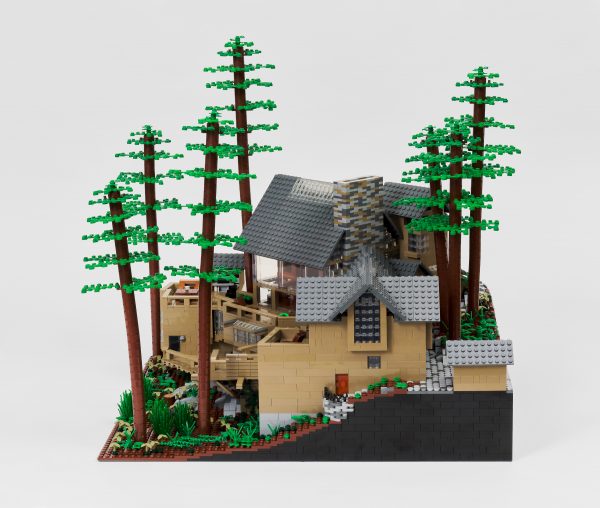
Landscape Plays a Lead Role
Besides touring the homes, Paul’s process also included cross-referencing pictures and Google Earth to ensure that he could get as many outlooks as possible on the site. He took incredible care to ensure every detail was accounted for, especially when it came to the landscape.
After all, one of the main tenets of West Coast Modernism architecture is that a house needs to be situated and nestled into its site, as the landscape dictates the shape of the project. With this in mind, the landscape is as much of a main character as the home is and should not be left out of the models.
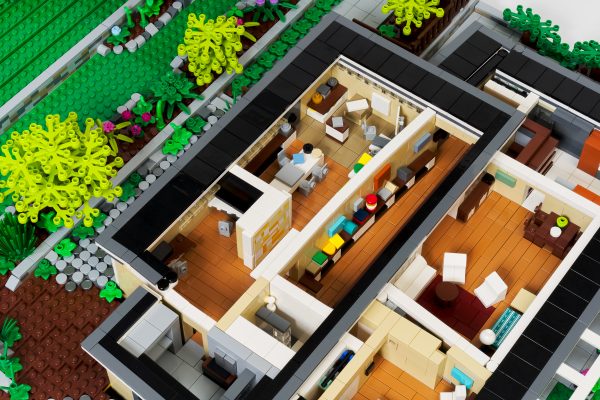
According to Hilary, the land in West Vancouver throughout the ’40s and ’50s was relatively inexpensive, and many West Coast Modern architects built their family homes in West Vancouver. The “rocky and irregular” building sites presented both a challenge and opportunity to builders, and architects built these homes in harmony with the landscape and climate. A temperate rainforest on a steep, mountainous landscape, offering sweeping views of the ocean.
Keeping in mind the early influence that the landscape had on West Coast Modern architecture, Hilary adds that “the beauty of the inclusion of the landscape is that one can see how the house fits on its actual natural site.”
When he built the Binning House model, for example, Paul took incredible care to include its very significant apple tree and to also ensure that every rock and tree is in the right spot in all his other projects.
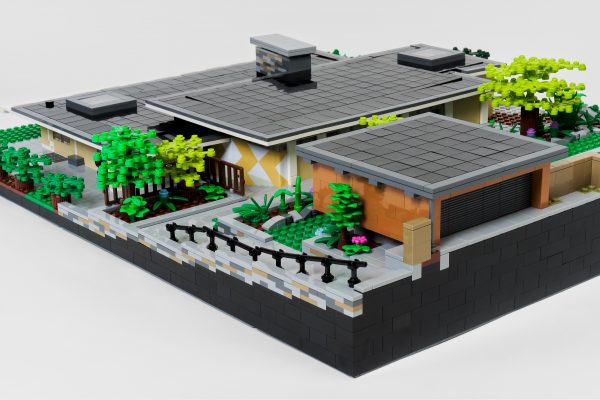
“I wanted to include just enough of the landscape, so you get a sense of why the house was built the way it was,” Paul explained. “The Eppich 2 cascades down the hill in three different levels, [while] the Smith House is quite famous for its floating living room that’s suspended between two rocky outcrops.”
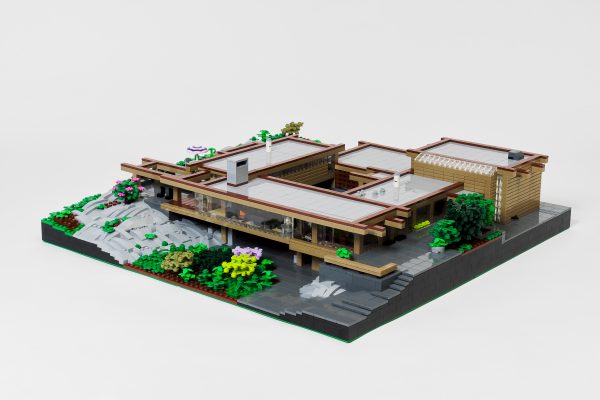
When it came to the Merrick House, the owners shared that architect Paul Merrick only cut down one single tree in order to build the home. “If you look at the model and see the way the shape of the house is, it works between all the trees on the lot, and it looks like the house is almost built around one spectacular tree – but it’s a clever illusion that Paul Merrick came up with,” said Paul. “[The tree] looks like it’s enclosed by the house, but it isn’t.”
The Pink Palace’s Final Years
Before he embarked on the West Coast Modern LEGO home journey, Paul had built a postcard version of the Pink Palace (the Villa Maris), a bright pink concrete building that he had been a fan of for quite some time. The Pink Palace is an iconic building situated on the West Vancouver skyline, and the 12-storey apartment block can be seen from Stanley Park and even Kitsilano on a clear day.
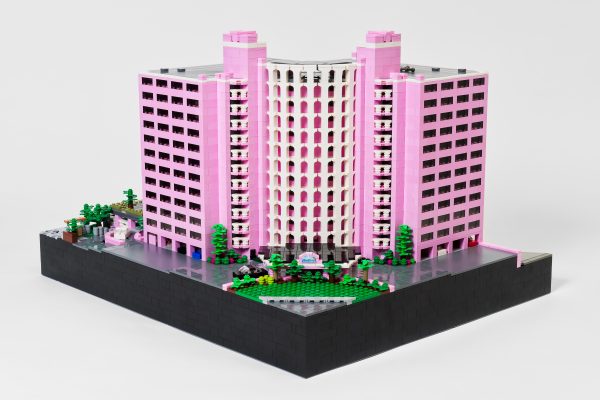
An example of Miami modern style that evokes the leisure and flamboyance of Miami Beach resorts, the Pink Palace is sadly set to be demolished in 2026 – although there doesn’t seem to be an update since the news was reported back in 2019.
According to Paul, the Pink Palace has incredible historical significance as sailors had actually used the building as a navigational tool, maybe even more so than Lighthouse Park.
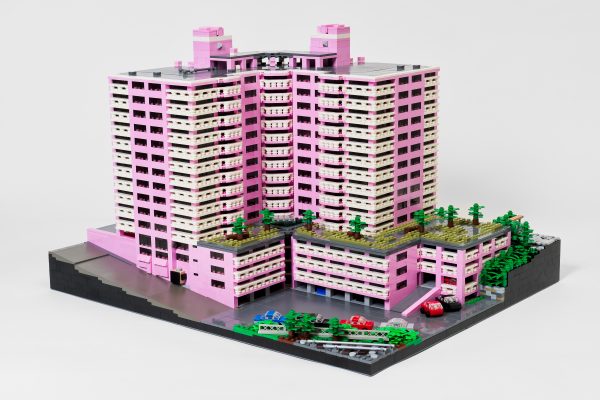
Saving West Coast Modern homes
According to Hilary, the art museum hopes to educate people with projects like Paul’s LEGO replicas and bring to mind the importance of preserving some of these vulnerable pieces of history. Just like the ill-fated Pink Palace, many of the West Coast-style residences are relatively new (50-70 years old) and for this reason—may be overlooked in terms of their heritage significance.
In 1994, West Vancouver ran an architecture survey of residences built between 1945 to 1975. The survey “identified 124 buildings of primary or secondary importance,” although including these buildings in the inventory doesn’t guarantee preservation. At the moment, according to the District of West Vancouver’s website, there are six buildings that have received designated heritage status, which protects them from being torn down or altered.
Ultimately, it appears that preservation efforts will come down to the owners of the homes and whether they’re able to recognize the heritage value of what they own.
***
Paul Hetherington’s ‘Bricktacular West Coast Modern Show” is on at West Vancouver Memorial Library until July 31st, 2023.
**
The quotes used in this story were taken from an in-depth interview led by West Vancouver Art Museum curator Hilary Letwin..
**
Iris Leung is a freelance journalist interested in writing about urbanism and gardening.

